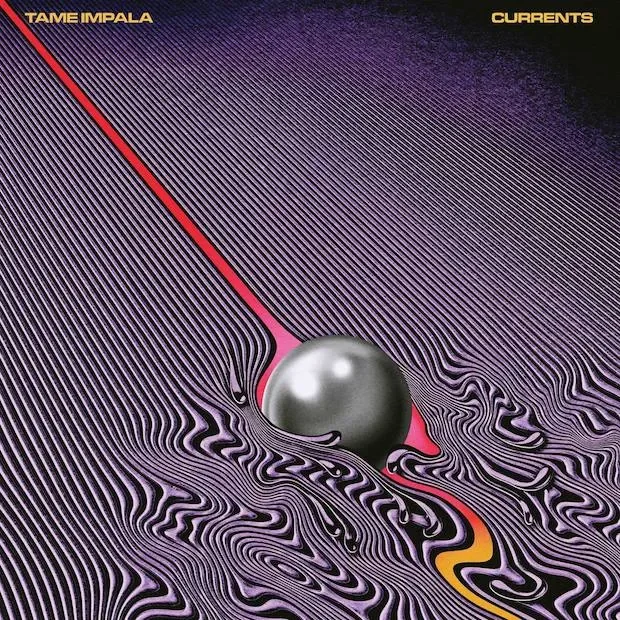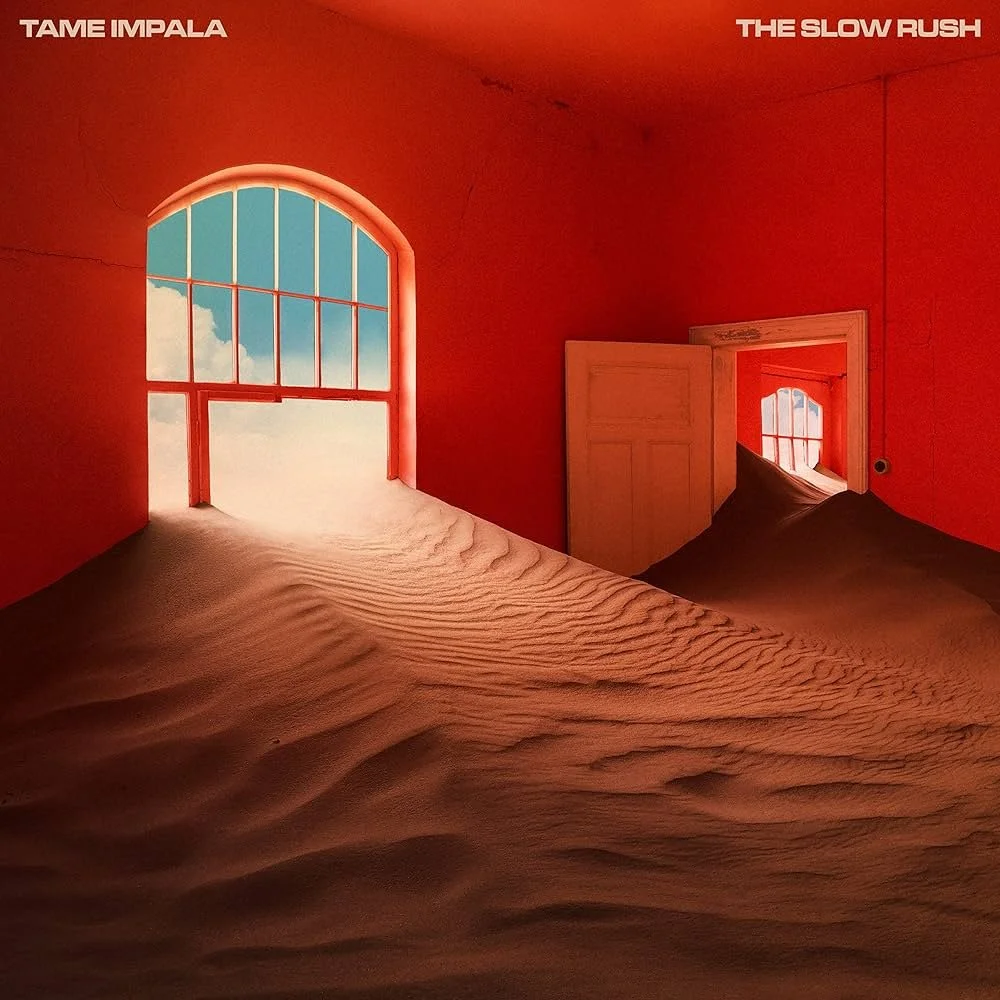The Evolution of Tame Impala
Few artists have managed to stay both relevant and widely unproblematic over nearly three decades. Kevin Parker, the mind, body, and spirit behind Tame Impala, has done just that. With his new album Deadbeat marking 17 years since his first release, Parker continues to evolve without ever compromising his vision.
As a long-time fan, I have been anxiously awaiting Deadbeat, which arrived this month—five years after his last release. Despite these longer-than-average gaps between projects, people consistently come back to listen, myself included. Parker’s sound, regardless of genre, has always been magnetic, containing a sort of musical wizardry that keeps him from falling into the predictable patterns so common among long-time musicians. While some OG fans mourn his move away from his psychedelic rock beginnings, I see this refusal to remain stagnant as proof of his creative genius.
Early Days—Baby Impala
Innerspeaker, 2008
Before Innerspeaker, Parker was an astronomy student in Perth, still trying to follow a “normal” path and unsure if music could ever be a full-time career. His 2008 self-titled Tame Impala EP was his first step into the Tame Impala universe. Though undoubtedly humble in scope, tracks like “Half Full Glass of Wine” and “Skeleton Tiger” already revealed his signature sound—dense layers of fuzz, reverb, and introspective lyrics.
When Innerspeaker dropped in 2010, it blew his EP out of the water. The record’s fusion of classic psychedelia with Parker’s perfectionistic production feels like a time machine from the late ‘60s and early ‘70s that crash-landed in 2010. There isn’t a single track that sounds like filler, which is rare for any artist’s debut. Influences from Led Zeppelin, Cream, Jimi Hendrix, and The Flaming Lips are easy to hear, yet Parker never sounds like he’s directly imitating anyone. The lyrics in most songs are incredibly self-reflective, with “Solitude is Bliss” exploring the perks of being a loner and “It’s Not Meant to Be” expressing his lack of concern for a girl's unreciprocated interest. His echo-soaked vocals, infectious guitar riffs, and John Bonham-style drums whisper and crash into a perfect blend of psychedelic euphoria.
Lonerism—Solidifying the Tame Impala Sound
Lonerism, 2012
With Lonerism (2012), Parker continued exploring isolation but blossomed into a more technically brilliant producer, fine-tuning what would become the definitive “Tame Impala” sound. He broke free from the more obvious influences in Innerspeaker, growing more confident in his own style with every song.
The album contained his first major hits, with “Feels Like We Only Go Backwards” and “Elephant,” cementing his place in the mainstream. But beyond these crowd-pleasers, Lonerism contains some of Parker’s most immersive work. “Apocalypse Dreams,” for instance, shifts back and forth from a hopeful, marching-band-esque beat to the feeling of drifting at sea, lost without a sense of direction. It’s the kind of song that makes me forget I’m on Earth, pulling me under and re-surfacing only when it’s over.
Currents—Risk, and Reward, in Reinvention
Currents, 2015
Currents (2015) was Parker’s Kid A moment, taking a complete left turn from psychedelic rock into lush synth-pop. While his roots remained visible, the opener “Let it Happen” makes it clear just how drastically his style had changed. The song puts the fuzzed-out guitar in the backseat, with kaleidoscopic synths pushing forward a new world of sound. Lyrically, the album moves away from his earlier isolating inclinations, instead releasing control and embracing life’s inevitable changes. Nowhere is this clearer than on “Eventually,” a heartbreaking breakup anthem about the slow unraveling of a relationship, capturing the difficulty of moving on even when you know it’s the best decision.
While some of his die-hard psych-rock fans accused him of selling out, a criticism that has followed him to this day, Currents opened the door to hundreds of thousands of new listeners. Parker was now on the main stage, and the power was in his hands to decide where to take it next.
The Slow Rush—Anticipatory, Nostalgic Reflections
The Slow Rush, 2020
The Slow Rush (2020), despite sounding like it was written during the pandemic when we were all questioning our purpose, was actually released in February of 2020—just a month before the world went into lockdown. It’s Parker’s most lyrically vulnerable album, with him opening up about deeply personal yet universally relatable themes. In “Posthumous Forgiveness”—a song I still can’t listen to without crying—he addresses his late father, moving from anger and resentment in the first half, to longing and forgiveness in the second. Across the record, he unpacks his anxieties, losses, loves, and dreams, all within 57 minutes and 27 seconds of raw brilliance.
My tickets for The Slow Rush tour were postponed due to the pandemic, and ironically enough, that was when I fell deepest into my Tame Impala obsession. When the first few piano chords of “Breathe Deeper” filled my ears during his Tame Impala Soundsystem Tiny Desk (Home) Concert with Jay Watson and Dom Simper, I fell in love with his music in a way I couldn’t have ever imagined.
Deadbeat—Moving into the Minimalist House
Deadbeat, 2025
Now, five years later, Parker has made a stripped-back yet powerful return with Deadbeat. On the surface, it might seem like a return to his earlier themes of inward-facing self-isolation and anxiety, but something different is happening here. Parker leans into his “deadbeat” identity, accepting imperfection and letting go of the need to appear like he has it all together. Despite some of the self-deprecating song titles, there’s a layer of total confidence in his newfound attitude. Even the album cover reflects this—it’s the first in 25 years to feature Parker’s face (almost) front and center, alongside his daughter, Peach.
Musically, the album matches that spirit. It’s his rawest work yet, featuring several tracks that strip back his usual wall of sound to nothing more than his voice and a piano. In fact, the album opens this way with the first minute of “My Old Ways,” echoing Lonerism’s closing track, “Sun’s Coming Up”—the only other time he’s reduced everything to this simple combination. But don’t be fooled—Deadbeat also delivers Parker’s grimiest, funkiest beats to date. ”Ethereal Connection,” my favorite track, feels like a lost cut from Underworld’s discography. I was almost disappointed that Karl Hyde’s vocals didn’t appear after eight minutes of the dark, pulsating rhythm.
The album’s poppier side comes through on “Dracula” and “Loser,” two of its singles that are ridiculously catchy and continue the dance-driven energy of The Slow Rush, each with serious earworm potential. Overall, the project fuses Parker’s recent work producing for pop artists, his growing experimentation in house, and the dreamlike psychedelia of his early years.
Yes, We’re Changing
Change has always been the core of Parker’s musical world. As he has grown up, fallen in love, gotten married, and become a father, I’ve experienced my own transformations through school, friendships, heartbreaks, and stepping into adulthood. Each album has served as a sort of time capsule, soundtracking different stages of my life. And Deadbeat, with its grounded self-awareness and quiet confidence, feels like the perfect accompaniment for this one.
While I’m not a 39-year-old Australian man with a wife and two kids, Parker’s music has made me feel like we aren’t so different after all. It takes a special kind of person to stay relatable while constantly changing, and that is exactly what has allowed Parker to remain both relevant and timeless throughout his long-lasting career.





